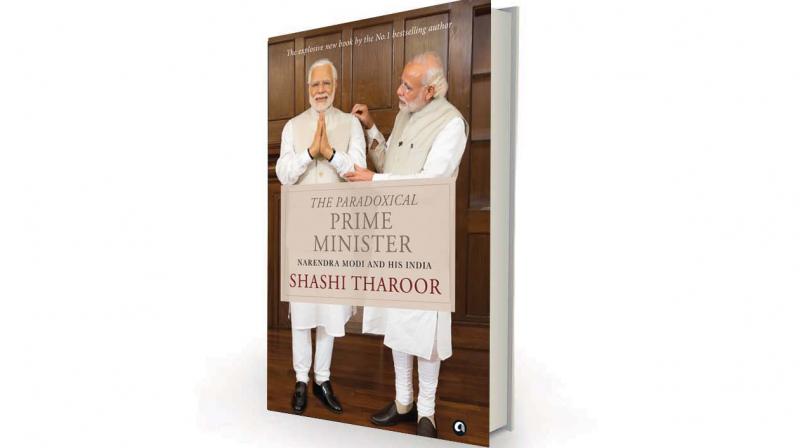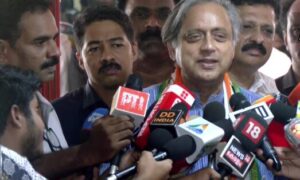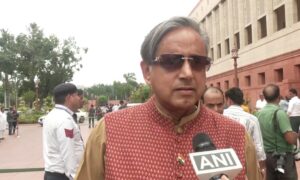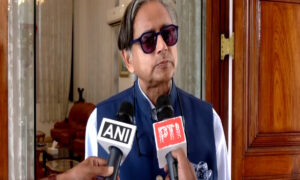
As we know , the Modi government was elected in 2014 on a promise of ‘ acche din’ for the Indian people. As I have shown, although the core supporters of PM Modi’s Bharatiya Janata Party belonged to the Hindu right- wing, there is no doubt that what tipped it over the threshold of victory was an upbet economic message of imminent growth and prosperity . CM Modi was portrayed as the dynamic CEO of his home state, Gujarat, who had presided over the unprecedented growth and development and who would be able to do for India what he had done for Gujarat. A vote for the BJP , It was said , would be a vote for rapid and effective economic developement.. ‘Acche Din’ would soon follow.
It didn’t . As we come to the end of the Modi government’s term, we have witnessed economic misgovernance on quite a spectacular scale, including the recklessly irresponsible overnight demonetization of the bulk of India’s currency with hugely negative consequences for the economy, lost jobs ( I go into this in detail later on in this section) , closed businesses , extortionate tax- collection and the botched implementation of one genuinely reformist measure, the rollout of a nationwide Goods and Services Tax ( GST), which I have looked at more closely in Chapter 36. As GDP growth has slowed down dramatically, exports have declined, manufacturing has collapsed and agriculture stagnated, the government has stopped talking of ‘acche din’ . Its new slogan is ‘saaf niyat, sahi vikas’ – clean intentions, true development. But in a democracy, voters and taxpayers are unlikely to reward intentions alone. Results matter, and the BJP has none to show.
Take demonetization, which I have excoriated in various forums, including on the Lok Sabha floor and in Chapter 35 of this book. It was sprung upon the nation as we were watching news of Donald Trump’s US election win in November 2016. Over twenty months later, none of its stated goals have been met: ‘black money’ is once again in circulation, ‘cashlessness’ remains a chimera, and even terrorists coming from across the Pakistan border have been found to be carrying the new notes. It is clear that demonetization has achieved nothing except causing intense inconvenience to ordinary Indians, and deaths of some hundred citizens, many aged pensioners who collapsed in the interminable queues required to withdraw their own money from banks.
 As of 10 June 2018, the total amount of valid currency notes with the Indian public amounted to Rs 19.3 lakh crore, higher even than the Rs 17.013 trillion figure reported ten days before demonetization was announced to curb the menace of too many notes. While credit and debit card usage is reportedly up, the Indian public seems to be using the latter mainly to withdraw record amounts of cash from ATMs. Though the number of ATMs has risen only marginally since demonetization, the number of ATM withdrawals and the amounts involved have increased to more than 22 per cent of the levels recorded in pre- demonetization months. Cash in circulation is at a record high, with the currency with the public doubling from Rs 7.8 lakh crore before demonetization to Rs 18.5 lakh crore in April 2018. In a country where digital transactions are still to earn public trust ( and where fees for using cards arouse considerable reluctance from spenders) cash is still king, whether for purchasing clothes or buying meals.
As of 10 June 2018, the total amount of valid currency notes with the Indian public amounted to Rs 19.3 lakh crore, higher even than the Rs 17.013 trillion figure reported ten days before demonetization was announced to curb the menace of too many notes. While credit and debit card usage is reportedly up, the Indian public seems to be using the latter mainly to withdraw record amounts of cash from ATMs. Though the number of ATMs has risen only marginally since demonetization, the number of ATM withdrawals and the amounts involved have increased to more than 22 per cent of the levels recorded in pre- demonetization months. Cash in circulation is at a record high, with the currency with the public doubling from Rs 7.8 lakh crore before demonetization to Rs 18.5 lakh crore in April 2018. In a country where digital transactions are still to earn public trust ( and where fees for using cards arouse considerable reluctance from spenders) cash is still king, whether for purchasing clothes or buying meals.
This is not a minor matter : it points to the failure of a key government policy initiative, the kind of dramatically disruptive move that Narendra Modi imagined would jump- start and modernize the economy.
Mr Modi campaigned in 2014 on the insecure but attractive slogan that ‘ government has no business to be in business’. But four years he has continued the government’s role in every business it ought not to be in, from running hotels to making condoms. ‘Divestment’ consisted merely of selling part of the government’s share of some public sector companies to other public sector companies, thus the government owned Oil and Natural Gas Cooperation bought the government owned Hindustan Petroleum Corporation, with Mr Modi crowning about disinvestment. And when the government finally attempted an important act of privatization – that of the loss making state airline Air India – it hedged the sale offer with so many conditions, including the government’s retaining a 23 per cent stake, that not a single bidder came forward. .
All of this, coupled with the sea of red ink listing bad loans at state- owned banks ( now at record breaking Rs 85, 370 crore in 2017- 18, with a dozen major bad loan defaulters in the bankruptcy courts) has dented the investment climate in India. The bond market is in a mess , bank lending to industry has declined to a mere 0.7 per cent growth rate, prompting industrial growth recession; the banks are groaning under sovereign debts ( and don’t want to acquire more). There is practically no major private investment by major Indian companies. And foreign investors are fleeing: since January 2018, they have dumped more than $4.5 billion in Indian government bonds.
Inevitably the rupee has sunk to record lows. This in turn has hugely driven up the cost of India’s energy imports at the very time that global oil prices are increasing. As India’s energy import bills rise, the current deficit, already 2 per cent will increase. Before he became PM, Narendra Modi saw any depreciation in the value of the rupee as an assault on national pride and honour. If the rhetoric he used then were used against him today, by his own logic as the rupee tumbles to 72 to the dollar, he’d have to accept blame for squandering more national pride than any PM before him .
(‘Extracted from The Paradoxical Prime Minister by Shashi Tharoor , with permission from Aleph Book Company’. )


















